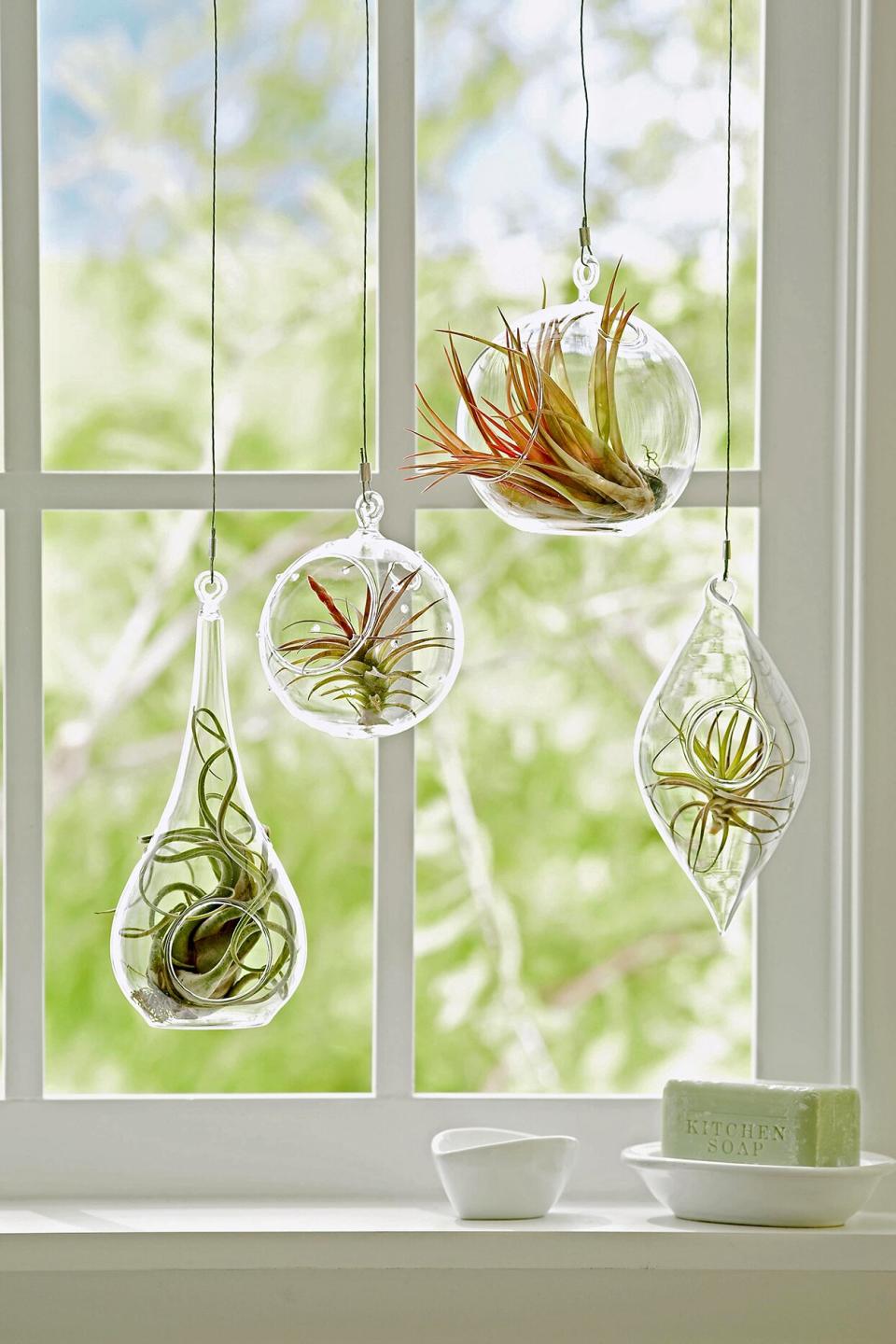Grow and Care for Air Plants Like a Pro—Here's How

Air plants seem almost otherworldly the way they can grow, well, just in air. Yep, no soil at all required. Plus their leaves can look like a bit like alien tentacles or like the appendages of an exotic sea creature. These fascinating little plants have become quite popular over the last few years, appearing in just about any garden center or even in the checkout line at the grocery store. And there are plenty of online nurseries specializing in air plants, particularly the more unusual types. They're a bit different to grow than most other houseplants so we've rounded up a few tips for caring for air plants and enjoying them in your home.

Dean Schoeppner
About Air Plants
Air plants (Tillandsia spp.) are epiphytes, meaning that in nature they grow on other plants, usually on tree branches. There are hundreds of species and varieties of air plants. They usually have strap-shape or slender triangle-shape leaves that grow in a rosette pattern with new growth appearing from the center. Those with silver foliage tend to be the most drought-tolerant; greener types dry out faster. You can also find colorful species, like Tillandsia maxima that can have coral leaves. Most species produce attractive, tubular or funnel-shaped flowers, too.

Jacob Fox
Air Plant Care
Don't let the lack of soil scare you away. Air plants are easy to care for once you know what they need. You may not have to worry about potting them, but they do still need a certain amount of water and light, plus the right temperatures, just like any other houseplant. You'll know that an air plant is getting what it needs when it sends up flowers. Once the flower dries out, just snip it off and your air plant will keep on growing and eventually making more blooms.
Watering Air Plants
Air plants don't have roots like other plants; they only have a few short ones which are meant to help hold it onto whatever surface it's on. In their native habitats across the Southern US, Mexico, Central and South America, air plants get what they need from high humidity and plentiful rainfall. In your home, you'll need to water your air plants about once a week. Some varieties can go two weeks without being watered. Keep an eye on them to determine when your plants seem to need a drink.
To water, place them in the sink or a small jar with enough water to submerge your plants. Let them soak for about half an hour, then give them a gentle shake or two to dislodge some water before turning them upside down on a towel to let them drain. Once they are dry, return them to their designated spot. You can also mist them every other day between baths to keep them looking fresh, especially in winter when humidity in our homes tends to be lower.
Air Plant Light Requirements
As a general rule, keep your air plants out of direct sunlight. Remember, in the wild, many air plant species like to grow up in the sheltered, shady canopy of trees. They will do best if you can put them in a brightly lit spot out of the sun's rays. A few species, such as T. cyanea or T. lindenii can handle some dappled shade or less intense morning sunlight.
Air Plant Temperature Requirements
Air plants love warm weather so it's the other end of thermometer you need to watch. Protect your plants from anything colder than 45 degrees; they will die at those temperatures. If you live in Zone 9 or warmer, you can grow an air plant outdoors all year if you keep it dry during the winter.

Peter Krumhardt
Styling Air Plants
Air plants look great all on their own or in groups where you can display several varieties together. They can be placed in terrariums or attached to anything from magnets to driftwood for creating your own interesting displays—just use a bit of hot glue or translucent fishing line to secure them. Tillandsia species also make fine companions on a branch with orchids because they like essentially the same conditions. You can also find glass or plastic globes that are made specifically for hanging them. For varieties that have colorful leaves such as Tillandsia aeranthos 'Amethyst', also called the rosy air plant, try using a container that complements or contrasts with their hues.
Because they don't need to grow in soil, air plants can be displayed in just about any way you can dream up. Try using them as an air plant wreath, hanging mobile, or even a beach-themed terrarium that plays off their resemblance to an octopus. Without much effort on your part, these plants can add fun, unique greenery to just about any space.

